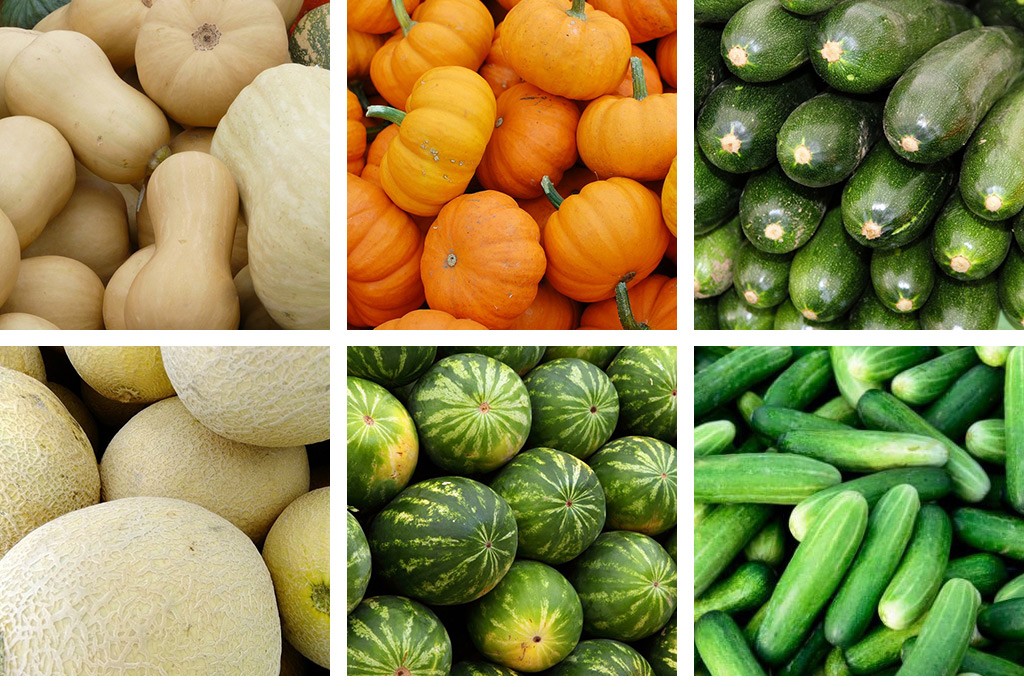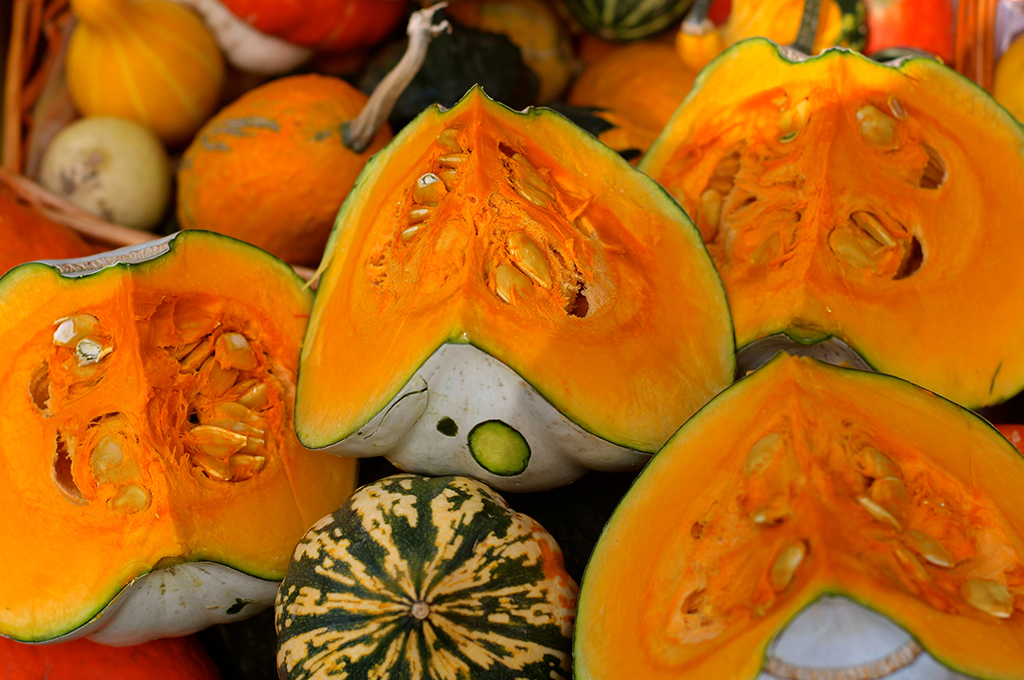Pumpkins, butternut, courgettes, melons and cucumbers all belong to the family of plants called gourds. It is suspected that gourds were one of the first cultivated plants as they have been found in archaeological sites dating back as early as 13,000 BC. Gourds have been a popular staple in many diets around the globe and have been celebrated throughout history.
 Clockwise: butternut, pumpkin, courgette, cucumber, watermelon and cantaloupe melon.
Clockwise: butternut, pumpkin, courgette, cucumber, watermelon and cantaloupe melon.
Most gourds (but not all) have hard shells that protect tasty insides. They are packed with vital phytonutrients which play an important part in a healthy diet. The water and fibre content of some gourds helps with constipation by freeing up and activating the digestive system. Gourds also help to reduce inflammation in the liver and kidneys.
The orange colour of melons and squashes is a bright sign that they’re full of beta-carotene, which turns into vitamin A in the body. This is important for your immune system, helps you see better in dim light and it keeps your skin healthy and clear. Melons can even reduce inflammation and reduce blood pressure. Squashes are also good sources of lutein and zeaxanthin, which protect your eyes from harmful UV rays.
Watermelons are a great source of lycopene, a carotenoid phytonutrient that’s especially important for our cardiovascular health and is a powerful antioxidant, helping to guard your cells against harmful cancer-causing free radicals and oxidative stress.
Gourds generally are also a great source of that rock star antioxidant, vitamin C.
Not only are gourds loved for their flavour and their goodness, but they’ve been culturally important too, as some cultures have transformed them into cooking tools and utensils, musical instruments and other forms of art over the years. Throughout the ages gourds have kept stomachs full and bodies healthy and they deserve our respect.
These are some of our favourite members of the gourd family:
- Butternut
- Zucchini (Courgette)
- Pumpkin
- Cucumber
- Melons
x
